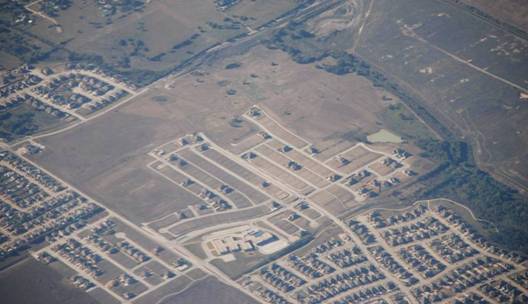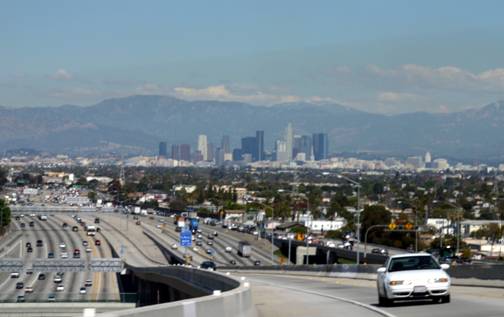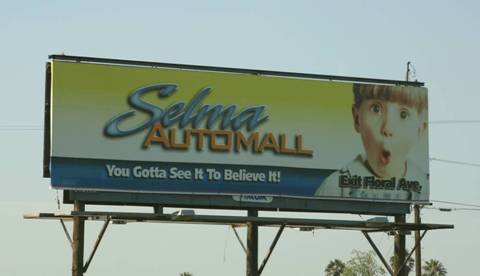A biweekly newsletter with public space news, resources, and opportunities.
A curated dispatch on all things public markets plus the latest announcements from the Market Cities Program.

Much of the wealth invested in the US transportation system has disappeared. The Obama Administration's Government Accountability Project has revealed that Americans have been paying into a system of transportation that has actually been stripping wealth from communities and degrading the American quality of life for decades. While the findings are a shock to the country, the Obama administration is using this crisis as an opportunity to shift investment into a new system of transportation.

Gary Toth, Director of Transportation Initiatives at Project for Public Spaces, confirmed the anomaly while reviewing State DOT proposals for stimulus funding. He found that much of the money was not actually improving access for Americans. "Much like drug addiction, investments in high speed highway capacity led to a temporary high but were quickly followed by a craving for more," said Toth. "Each addition of road capacity created sprawl and degraded the very destinations the system is meant to connect people with. In the end, the funding was simply supporting driving more and more and accomplishing less and less."

Toth said he became suspicious after examining all the money that had gone into the transportation system over the last fifty years, and realizing how little had come out of it. "All that money, and things just became worse!" he explained.

Early investors in the scheme, including auto companies, speculative greenfield developers and oil companies, did well for themselves and have been able to keep the scheme going for decades. It is the subsequent investors -- most of Americans -- attracted by the mirage of their success, who will be hurt the most.

The storm of recent events has made the scheme impossible to cover up. While some experts have known for years that Americans were losing out on quality of life, health, livability and the future of the plan, the general populace was sheltered from the truth until the collapse and current shake up of the auto industry, the burst in the real estate bubble and fluctuation in energy prices.

Certainly there is blame to be placed on system regulators, but everyone who has bought into the system is partly to blame. Traffic engineers and planners have been responding to the public's mandate to keep traffic flowing at any cost, while planning only for cars and traffic. Seeking to keep providing what customers were asking for, they ignored warning signs. No one has been in charge of planning for people and places.

Secretary of Transportation Ray LaHood assured the nation that it would be able to pull through this crisis. In a speech, he said, "America has been caught on the wrong track, but in this crisis is great opportunity. Our new program to rebuild the system around livable communities will give transportation choices back to people, have transportation investments going again to build local economies and creating jobs. We can now rebuild America around the values and local communities we hold most dearly! We will return the streets to the American people!"

Analysts expect to see mass sales of cars and real estate holdings that were part of the Ponzi scheme, and as a result, renewed social and economic investment in cities and towns. Also expected is an investment in livable communities and places that build lasting value and are easier to get to and between. To accomplish this, new investments are expected to start with Placemaking.

Many subsidies that were previously supporting the Ponzi scheme are now considered by lawmakers to be a form of communism for the car. Transit systems bankrupted by the Ponzi scheme will now begin to receive funding, setting them up to become catalysts for the new patterns of land use and behavior.

Under the new leadership of Sam Schwinn, GM will now start to invest in trolleys, bicycles and main streets to create demand for a new wave of American innovation and be a partner in the rebuilding of America.

The rich text element allows you to create and format headings, paragraphs, blockquotes, images, and video all in one place instead of having to add and format them individually. Just double-click and easily create content.
The rich text element allows you to create and format headings, paragraphs, blockquotes, images, and video all in one place instead of having to add and format them individually. Just double-click and easily create content.
Body Text Body Link
The rich text element allows you to create and format headings, paragraphs, blockquotes, images, and video all in one place instead of having to add and format them individually. Just double-click and easily create content.
Here is some highlighted text from the article.




Headings, paragraphs, blockquotes, figures, images, and figure captions can all be styled after a class is added to the rich text element using the "When inside of" nested selector system.
Headings, paragraphs, blockquotes, figures, images, and figure captions can all be styled after a class is added to the rich text element using the "When inside of" nested selector system.
Headings, paragraphs, blockquotes, figures, images, and figure captions can all be styled after a class is added to the rich text element using the "When inside of" nested selector system.

We are committed to access to quality content that advances the placemaking cause—and your support makes that possible. If this article informed, inspired, or helped you, please consider making a quick donation. Every contribution helps!
Project for Public Spaces is a 501(c)(3) tax-exempt organization and your donation is tax-deductible within the guidelines of U.S. law.